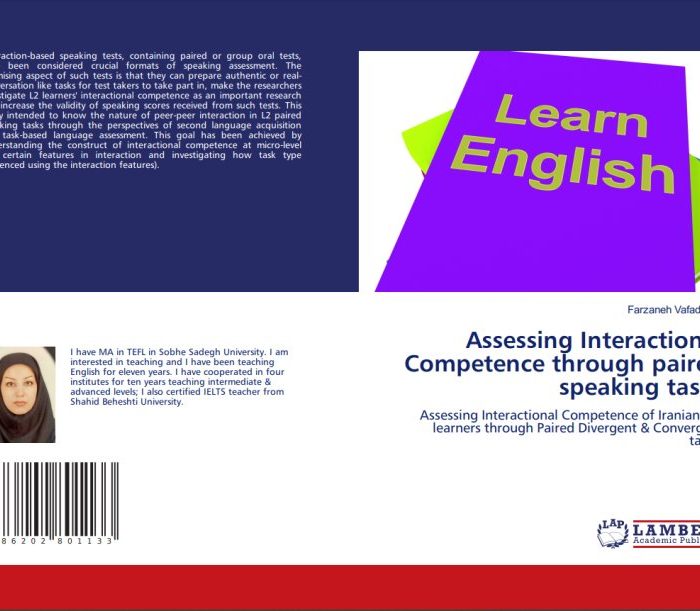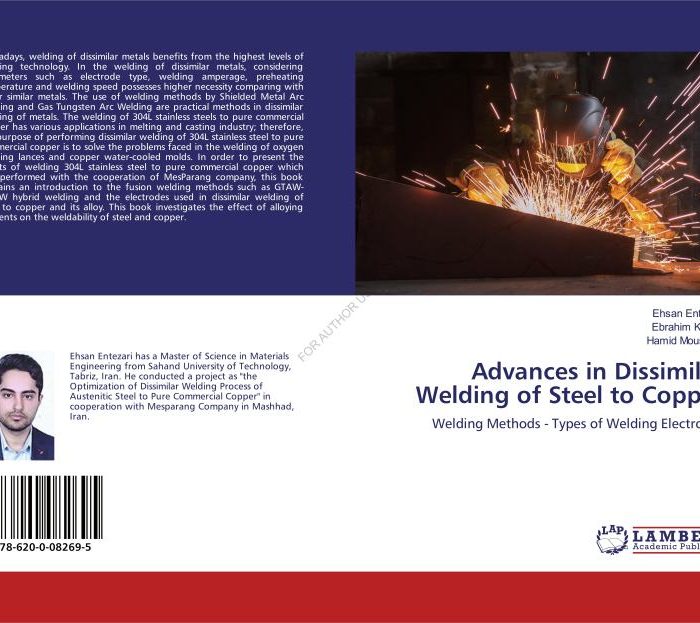کتاب The Mystic Ladder
۳۲۸,۰۰۰ تومان Original price was: ۳۲۸,۰۰۰ تومان.۲۳۲,۲۲۴ تومانCurrent price is: ۲۳۲,۲۲۴ تومان.
| تعداد صفحات | 176 |
|---|---|
| شابک | 978-620-6-74079-7 |
| انتشارات |

کتاب The Mystic Ladder – سفری به دنیای رمز و راز
کتاب The Mystic Ladder رمانی پر از رمز و راز است که خواننده را به دنیایی متفاوت از تجربیات عرفانی و روحانی میبرد. این اثر با روایت داستانی تأثیرگذار، پل ارتباطی میان دنیای مادی و معنوی را به تصویر میکشد و مفاهیم عمیق معنویت، آگاهی و جستجوی حقیقت را کاوش میکند.
درباره کتاب The Mystic Ladder
داستان این کتاب حول محور شخصیتی میچرخد که با نردبانی اسرارآمیز روبهرو میشود؛ نردبانی که نماد سفری به درون است. شخصیت اصلی با عبور از مراحل مختلف، درک عمیقتری از خود و جهان اطرافش پیدا میکند. این کتاب با ترکیبی از داستانسرایی جذاب و پیامهای معنوی، خوانندگان را به تفکر وادار میکند.
موضوعات کلیدی کتاب
- معنویت و رشد درونی: کشف ارتباط میان روح و واقعیت زندگی.
- جستجوی حقیقت: تلاش شخصیت اصلی برای یافتن معنای واقعی زندگی.
- تجربیات عرفانی: نمایش سفرهای ذهنی و روحانی از طریق داستانی نمادین.
- پرسشهای فلسفی: بررسی سؤالاتی عمیق درباره ماهیت انسان و جهان.
ویژگیهای برجسته کتاب The Mystic Ladder
- داستانسرایی جذاب: روایت روان و پر از تعلیق که خواننده را مجذوب میکند.
- پیامهای عمیق معنوی: اثری که هر خوانندهای را به فکر فرو میبرد.
- شخصیتپردازی قوی: شخصیتهایی که با چالشها و تجربیاتشان به خواننده نزدیک میشوند.
- مناسب برای همه: داستانی که با هر سبک زندگی و تفکر، الهامبخش خواهد بود.
چرا کتاب The Mystic Ladder را بخوانید؟
این کتاب برای کسانی که به دنبال تجربهای متفاوت در دنیای ادبیات و سفری درونی به اعماق وجود خود هستند، اثری ضروری است. با مطالعه این کتاب، نهتنها داستانی مهیج و دلنشین را دنبال میکنید، بلکه با پیامهایی از امید، معنا و اتصال آشنا خواهید شد.
مخاطبان کتاب The Mystic Ladder
- علاقهمندان به داستانهای عرفانی و معنوی: برای کسانی که به دنبال داستانهایی پر از رمز و راز هستند.
- افراد جویای رشد درونی: کسانی که به خودشناسی و معنویت علاقه دارند.
- علاقهمندان به فلسفه و تفکر عمیق: برای بررسی پرسشهای فلسفی در قالب داستان.
- کتابدوستان ماجراجو: کسانی که به دنبال داستانی متفاوت و مملو از تعلیق هستند.
سفارش کتاب The Mystic Ladder
برای خرید کتاب The Mystic Ladder و همراه شدن با این سفر پررمز و راز، به بخش فروشگاه سایت مراجعه کنید یا با ما تماس بگیرید. این کتاب شما را به دنیایی جدید از تفکر و احساس میبرد.
1. کتاب “The Mystic Ladder” در چه زمینهای نوشته شده است؟ 📖
پاسخ: کتاب “The Mystic Ladder” به مباحث عرفانی و روحانی پرداخته و در آن به شرح مراحل سیر و سلوک معنوی انسان در راه رسیدن به حقیقت، وحدت، و کمال انسانی میپردازد. این کتاب به بررسی موضوعات مختلفی مانند حقیقت، عشق، اراده آزاد و تقدیر، تحمل درد و رنج، و دیگر مفاهیم عرفانی و فلسفی میپردازد.
2. مفهوم “Shariat, Tarighat, and Haghighat” چیست؟ 🔍
پاسخ: در کتاب، این سه مفهوم به مراحل مختلف سیر و سلوک اشاره دارند. “Shariat” به قانون و احکام دینی اشاره دارد که باید در آغاز راه عرفانی رعایت شود. “Tarighat” به مسیر یا راهی است که سالک طی میکند تا به حقیقت دست یابد. “Haghighat” به حقیقت نهایی اشاره دارد که همان رسیدن به کمال انسانی و اتحاد با خداوند است.
3. “Towhid” یا “وحدت” در کتاب چه مفهومی دارد؟ 🌍
پاسخ: “Towhid” یا وحدت یکی از مفاهیم اساسی در عرفان اسلامی است که به معنای اعتقاد به یگانگی خداوند و اتحاد همه موجودات با ذات الهی است. در این کتاب، این مفهوم بهعنوان یکی از مراحل مهم در مسیر عرفانی برای درک حقیقت و رسیدن به کمال انسانی معرفی میشود.
4. “The Perfect Human” یا “انسان کامل” در کتاب چگونه تعریف شده است؟ 👤
پاسخ: در کتاب، “The Perfect Human” به انسان کامل و یا انسان متعالی اشاره دارد که در مسیر عرفانی به تکامل روحانی و معنوی دست یافته است. این انسان نه تنها درک عمیقی از حقیقت دارد بلکه در تمام ابعاد زندگی خود از عشق، حکمت، و مهربانی پیروی میکند.
5. در مورد “Wilayat Pyramid” و مقامات مختلف آن چه توضیحی داده شده است؟ 🏰
پاسخ: “Wilayat Pyramid” در کتاب به سلسله مراتب معنوی اشاره دارد که در آن مقامات مختلف عرفانی شرح داده شده است. این مقامات شامل “Qotb” (قطب)، “OWTAD” (اوتاد)، “Abdal” (ابدال)، و دیگر درجات عالی در مسیر عرفانی است که هرکدام نماد مقامهای مختلف قرب به خداوند و کمال انسانی هستند.
6. “Nafs” یا “نفس” در کتاب چه نقشی دارد؟ 😈
پاسخ: “Nafs” یا نفس به همان ego یا نفس انسانی اشاره دارد که در بسیاری از مذاهب و عرفانها بهعنوان مانع اصلی در مسیر سیر و سلوک معنوی شناخته میشود. در این کتاب، “Nafs” به عنوان یکی از بزرگترین موانع بر سر راه رسیدن به حقیقت و کمال انسان معرفی شده است و باید تحت کنترل قرار گیرد تا سالک بتواند به قرب الهی دست یابد.
7. “Pain and Suffering” یا “درد و رنج” در کتاب چگونه بررسی شده است؟ 💔
پاسخ: در این کتاب، درد و رنج بهعنوان بخش جداییناپذیر از مسیر رشد روحانی و تکامل انسان دیده میشود. این کتاب تأکید میکند که درد و رنج میتوانند باعث بیداری روحانی و درک عمیقتر از حقیقت شوند و فرصتی برای خودشناسی و نزدیک شدن به خداوند فراهم کنند.
8. مفهوم “Love” یا “عشق” در کتاب چه معنایی دارد؟ ❤️
پاسخ: در کتاب، “Love” به عشق الهی و بیپایان اشاره دارد که اساس تمام فرآیندهای روحانی و عرفانی است. عشق به خداوند، عشق به دیگران، و عشق به خود، همگی اجزای ضروری در مسیر سیر و سلوک بهسوی کمال و حقیقت هستند. عشق بهعنوان یک نیروی تحولآفرین معرفی میشود که انسان را از جهل به روشنایی میرساند.
9. “Piir” یا “پیر” در کتاب چه مفهومی دارد؟ 🧙♂️
پاسخ: “Piir” یا پیر به معنای استاد یا مرشد معنوی است که راهنمای سالک در مسیر عرفانی است. در کتاب، پیر بهعنوان فردی معرفی میشود که از تجربههای روحانی و حکمت عمیق برخوردار است و میتواند سالک را در عبور از مراحل مختلف سیر و سلوک یاری دهد.
10. “Silence” یا “سکوت” در کتاب به چه موضوعی اشاره دارد؟ 🤫
پاسخ: “Silence” یا سکوت در این کتاب بهعنوان یکی از ابزارهای مهم در مسیر رشد معنوی و روحانی معرفی میشود. سکوت به معنای ترک حواس پرتیهای دنیوی و ایجاد فضایی برای تأمل، دعا و ارتباط مستقیم با خداوند است. در این کتاب، سکوت بهعنوان راهی برای دستیابی به درک عمیقتر و حقیقت نهایی مطرح میشود.
11. “Free Will vs Determinism” یا “اراده آزاد در مقابل تقدیر” در کتاب چگونه مطرح شده است؟ ⚖️
پاسخ: در این کتاب، مسئله اراده آزاد در مقابل تقدیر (فیتالیزم) بهعنوان یکی از مسائل فلسفی و عرفانی مهم بررسی شده است. کتاب به تأمل در این موضوع میپردازد که آیا انسانها از اراده آزاد برای تصمیمگیری برخوردارند یا اینکه همهچیز تحت تأثیر تقدیر الهی است. این موضوع در مسیر عرفانی انسان و تعامل او با خداوند نقش حیاتی دارد.
12. “Serr” یا “سر” در کتاب چه مفهومی دارد؟ 🔒
پاسخ: “Serr” یا سر بهعنوان مفهوم راز و حقیقت نهفته در کتاب معرفی میشود. این راز مربوط به درک عمیقتری از حقیقت الهی است که تنها برای کسانی که در مسیر سلوک معنوی و نزدیک شدن به خداوند قرار دارند، آشکار میشود. “Serr” بهعنوان حقیقت نهایی که در درون انسان و در جهان هستی نهفته است، بررسی میشود.
| تعداد صفحات | 176 |
|---|---|
| شابک | 978-620-6-74079-7 |
| انتشارات |
محصولات مشابه
-
کتاب Assessing Interactional Competence through paired speaking tasks
۱۸۴,۰۰۰ تومانOriginal price was: ۱۸۴,۰۰۰ تومان.۱۳۶,۱۶۰ تومانCurrent price is: ۱۳۶,۱۶۰ تومان. -
کتاب Silver Nanoparticles: Synthesis and Their Biological Applications
۲۱۰,۰۰۰ تومانOriginal price was: ۲۱۰,۰۰۰ تومان.۱۴۸,۶۸۰ تومانCurrent price is: ۱۴۸,۶۸۰ تومان. -
کتاب FEAR AND DESIRE
۱۴۰,۰۰۰ تومانOriginal price was: ۱۴۰,۰۰۰ تومان.۹۹,۱۲۰ تومانCurrent price is: ۹۹,۱۲۰ تومان. -
کتاب Advances in Dissimilar Welding of Steel to Copper
۱۴۰,۰۰۰ تومانOriginal price was: ۱۴۰,۰۰۰ تومان.۹۹,۱۲۰ تومانCurrent price is: ۹۹,۱۲۰ تومان.






